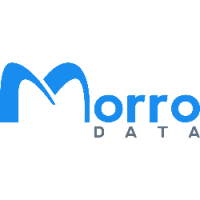VPN Connection to Your Office Network
The Pitfalls of Using VPNs to Access In-Office Desktops
VPNs, or Virtual Private Networks, have become increasingly popular for both personal and business use. In a business setting, VPNs also allow users to conveniently access files on their office desktop computer from anywhere. However, this useful and easy remote access has some often-overlooked restraints.
Increased Latency
Because of the very nature of a VPN, latency, the download and upload times, will all be increased. VPNs are an extra node in the network connection process and therefore delay connection speed. A user accessing their in-office desktop just adds one more step to get to their files. While narrowing VPN latency is possible by decreasing encryption strength, it comes at the heavy cost of reducing the level of security.
Single Sign On Security
A VPN’s convenience also comes with additional security risks. With a single sign on, a user can access their office desktop from a hotel, café, or even on the road. However, if that single sign on was to be compromised, it could mean data loss, ransomware attacks, or worse by malicious hackers. Thankfully, most users are cautious with their passwords. But if a user has the same passwords for multiple accounts and one of those accounts are involved in a data breach, that means everything on that remote desktop, or more, is now at risk.
While security on VPNs can be beefed up with multi-factor authentication, SSH keys, limiting access, and restricting protocols and services, it comes with the cost of decreasing the very convenience VPNs are meant to enable.
Hardware Restraints
One of the most overlooked aspects of remote connecting to an in-office desktop is the hardware limitations. When a user accesses a file from their office desktop using a VPN, one would think the user would be able to modify the file with their remote computer’s hardware capabilities. When working with large design, film, or sound files, this becomes imperative; a user’s home setup may be much more capable than their office desktop. However, because of the restraints of the VPN, a user will be restricted to the hardware capabilities of the office desktop. That can include application speed, processing speed, and even graphics.
For businesses working with large file types, this is simply untenable. The convenience of using a VPN to access an office desktop quickly becomes outweighed if a powerful workstation is limited to inferior hardware specifications. Fortunately, a VPN isn’t the only way to access data remotely.
Introducing Cloud NAS
Most small to medium-sized businesses are equipped with a Network Attached Storage (NAS) that allows users to access shared drives on the business servers. While this article has covered VPN access to in-office desktops, VPNs also allow access to on-premises NAS. Cloud NAS, however, removes the additional connections created by a VPN.
Unlike a VPN, a Cloud NAS allows a user to access files immediately without the issues described above. Due to the cloud configuration, a user doesn’t need to connect to a network; the files are already there. This decreases latency and makes large file types easy to modify without extended download or upload times.
Compared to VPNs, Cloud NAS is also more secure in that there isn’t a network to connect to. Less connections means less chances for hackers to intercept valuable data and compromise a business. This also means less management from the IT team in limiting access to services and protocols to try and prevent data breaches.
And best of all, a Cloud NAS doesn’t limit hardware capabilities in any way. As opposed to remote accessing an in-office desktop and being limited by that desktop, the files on the Cloud NAS are on the user’s computer directly with no limitations.
The Transition from VPNs to Cloud NAS for Remote Access
Sonic Union, a creative audio company with two main studios in NYC, faced a major shift with the onset of the pandemic, forcing them to rethink their traditional in-office workflow. They initially tried to rely on VPNs to facilitate remote work. However, they encountered several limitations with this approach. VPNs often introduced latency, making it impractical to manipulate large audio and video files remotely. Sonic Union evaluated the CloudNAS solution to ensure it met their specific requirements. CloudNAS was integrated into Sonic Union’s existing workflow seamlessly. The solution was configured to provide employees with access to the central data storage as if they were working in the office, without the latency issues associated with traditional VPNs.
The Bottom Line
As offices move to become more and more remote accessible, businesses will have to decide how they want to manage their employees’ access to files. While VPNs are undoubtedly convenient for many users, they also have some overlooked pitfalls.
Learn more about the benefits of Cloud NAS at Morro Data today.
